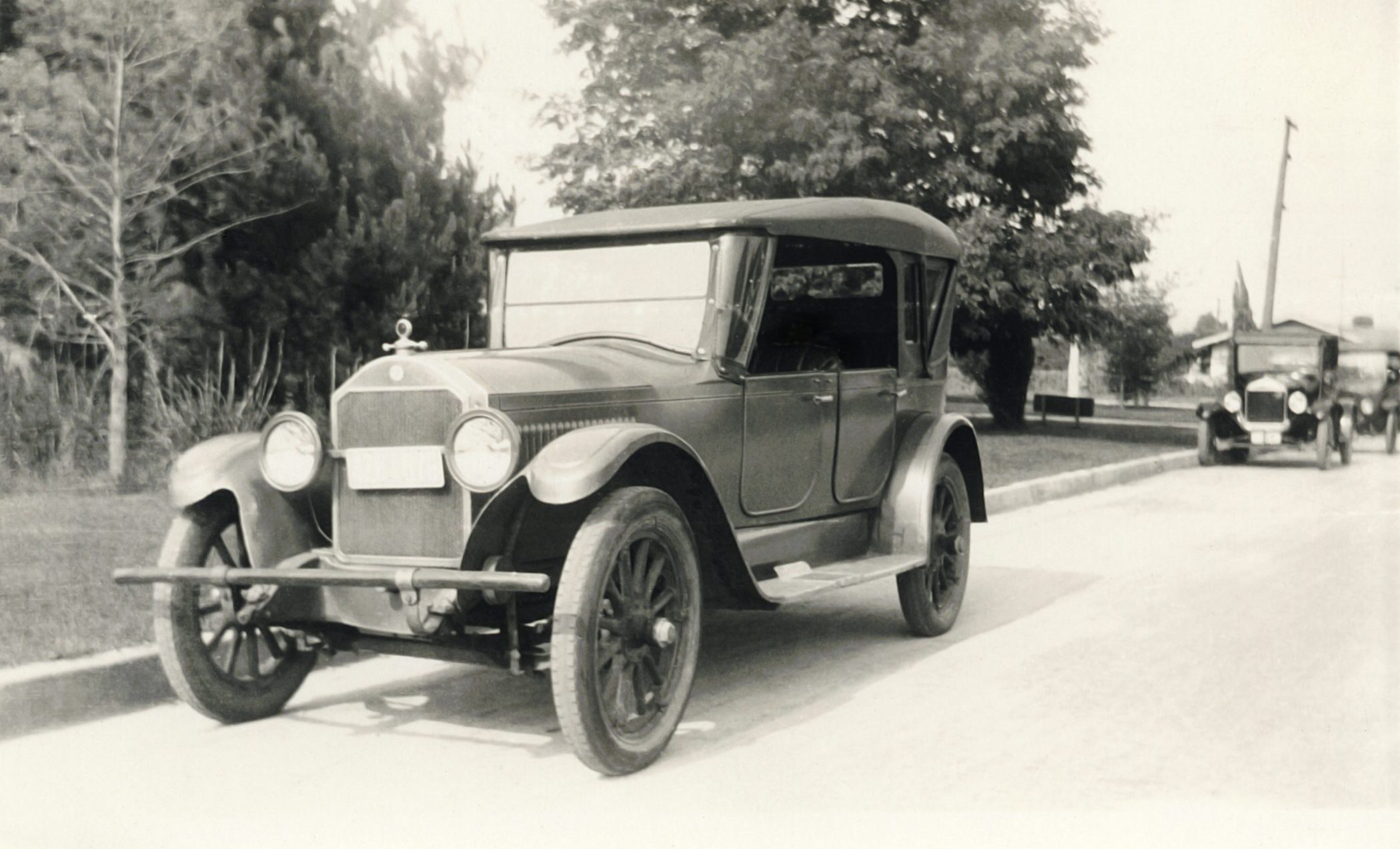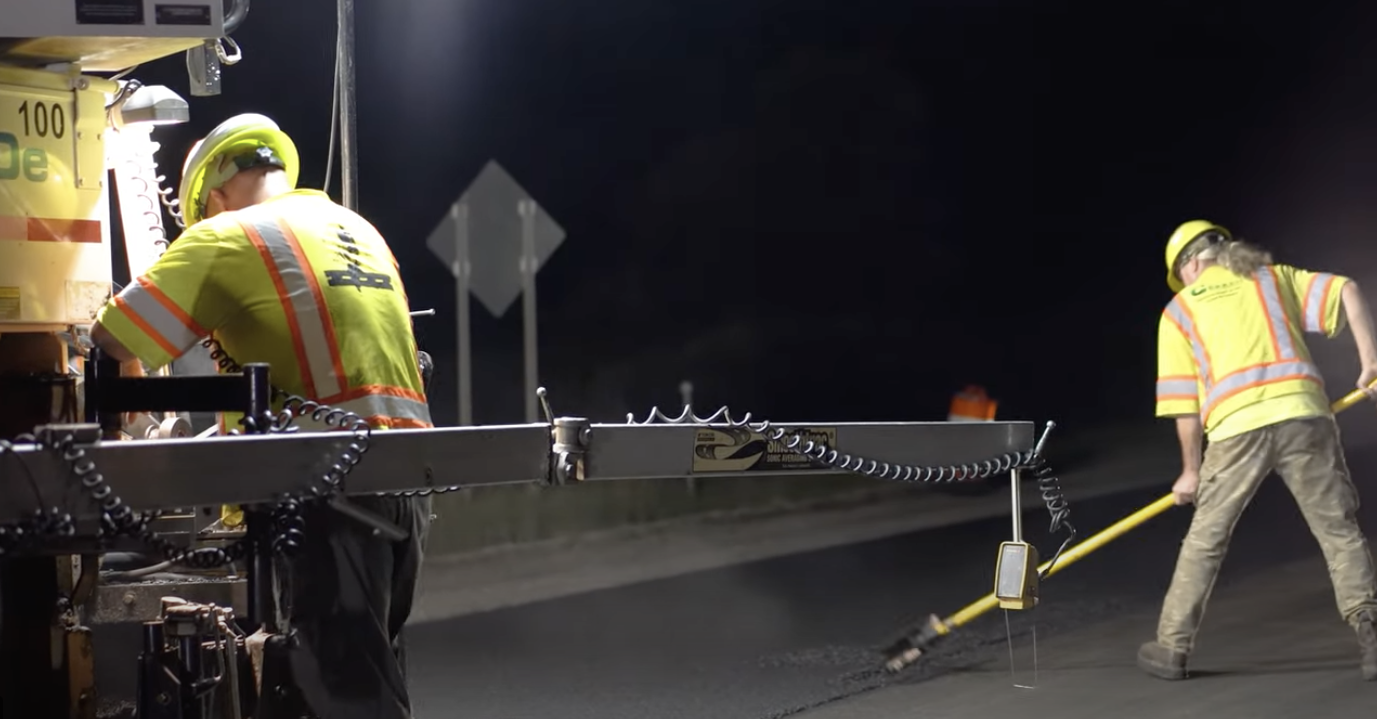HISTORY
The American Roadway
History of asphalt pavement and our country’s highway infrastructure.

The history of the American Road is more the story of the American automobile. In the early 1900s, cars became increasingly popular among Americans seeking transportation freedom.
In the early days of the automobile, most roads were still relatively crude. Car proliferation drove the booming advancement of our road systems and infrastructure. Let’s look back to ancient Mesopotamia, where we find evidence of the first-ever roads.
The Lasting Impact of Ancient Roads
The year is 4000 BC, and the most advanced method of transportation is horse and cart. Agricultural trade and commerce were the driving factors that demanded an ancient roadway. “The Sumerians used meticulous brick-making skills, forming identical mud bricks for building. After drying, they would take them to the site of a temple and set them in place with bitumen. Bitumen is the natural sticky black substance in asphalt. Centuries would pass before asphalt was used in Europe and America.”1
Though the Mesopotamians may have conceived the idea of a paved road, the Roman Empire made considerable strides in paving technology and road construction. The concept of layering implemented by the Romans is still used today and is an essential practice in building structural integrity on the road. In ancient times, the Romans would dig a trench and put large stones and boulders at the bottom for support. On top of that would be smaller stones, or what is known today as aggregates. These smaller materials would make up the actual “driving” surface due to their smoother makeup, aiding in more efficient travel. Fast forward a few thousand years, and you’ll see that liquid bituminous asphalt is a binder for the material in today’s roads. Foundational stone and sand (aggregates) are still vital components in roadways today. Though the first roads were built over 6,000 years ago, the general principles of what makes an excellent modern road can be found in their ancient counterparts.
The Dawn of The Asphalt Age
The first recorded use of liquid asphalt or bitumen in US roadway construction is dated back to 1870. “In 1870, a Belgian chemist, Edmund J DeSmedt, laid the first asphalt pavement in the US at Newark. He later used fifty-four thousand square yards of sheet asphalt from Trinidad Lake to pave Pennsylvania Avenue in Washington. In the same year, Cummer Company opened hot mix production facilities. The following year, 1871, Nathan. Abbott of Brooklyn, N.Y. filed the first asphalt patent.”1
Liquid bitumen is a naturally occurring resource, also known as tar. Tar pits are located in five areas of the globe and typically consist of fossilized organic matter. Naturally occurring bitumen was quickly replaced by asphalt produced from crude oil in the early 1900s. That was for many reasons, including added production efficiency and more flexible applications in construction. It was also more widely available because it could be mass-produced.
We still use bitumen derived from crude oil to this day. However, many additives and polymers are incorporated into the mix alongside the aggregates to increase durability and driveability. These additives also make our roads safer and provide more grip for vehicles to slow down faster. Ultimately, asphalt is king when it comes to the choice of road material for several reasons. Bituminous road construction produces a relatively smooth driving surface that leads to better driving conditions when appropriately installed.
A smoother surface equates to less maintenance (and easier repairs when maintenance is necessary), as well as a safer and quieter ride. It is also important to mention that asphalt can be recycled and reused in future projects, adding to the material’s sustainability.
Henry Ford and the Proliferation of The Automobile
Henry Ford set into motion the age of personal transportation. He largely contributed to the coming of the age of industrialism when he invented the first automobile in 1896, known as the quadricycle. However, Ford completely changed the game when he started producing the Model T in 1908, the first production automobile geared towards the consumer market. At a price of $300, this marvel would be accessible to rich and poor folk alike. It was so prolific that Ford would go on to produce 15 million Model Ts.
The automobile was undoubtedly the driving vessel for the advancement of transportation, but something was missing. It needed to be paired with a robust infrastructure to succeed. The first American roads weren’t, in fact, roads at all. When the English colonists first arrived in the 1600s, most roads of passage created by the Native Americans were single-file dirt pathways—big enough to fit one horse at a time going one way. These dirt ways were clearly no suitable match for the new world of industrialism and the invention of the automobile.
America’s thirst for true freedom had to be met with an advanced infrastructure that could support multiple vehicles carrying multiple people going in different directions at the same time. Shortly after the Model T’s proliferation in the early 1900s, Congress passed the Federal Aid Road Act of 1916, funding the states to improve their roads. Though this was the first critical step in supporting state roadways, there were many funding and legislative acts to come that would birth America’s interstate highway systems.
Wartime Advancements: The Need for a Better Roadway
Innovation happened early on in the 1900s indeed. However, the actual proliferation of our highway system in America would come from the demands of The World Wars. During the mid-1940s, the production of supplies and machines to aid the war effort recruited almost every working factory in the United States. As companies retrofitted their facilities to meet the growing production demand, so did our highway systems demand a greater bandwidth for transporting bigger machines at greater volume. The ability to adapt and pivot in the highly stressful situation of wartime was directly tied to America’s level of transportation infrastructure. It can be argued that ease of transportation and logistical prowess were some of the main reasons the Allies won the war. The importance of advanced highway systems was at the top of the priority list for presidents who led America before, during, and after the World Wars. Due to the efforts of the innovators and leaders of the past century, America’s means of transportation are one of quality and dependability.
From the old Native American foothills to the first dirt highways to today’s highly advanced turnpikes, America’s roadways have significantly advanced and built the level of freedom we all enjoy today.


